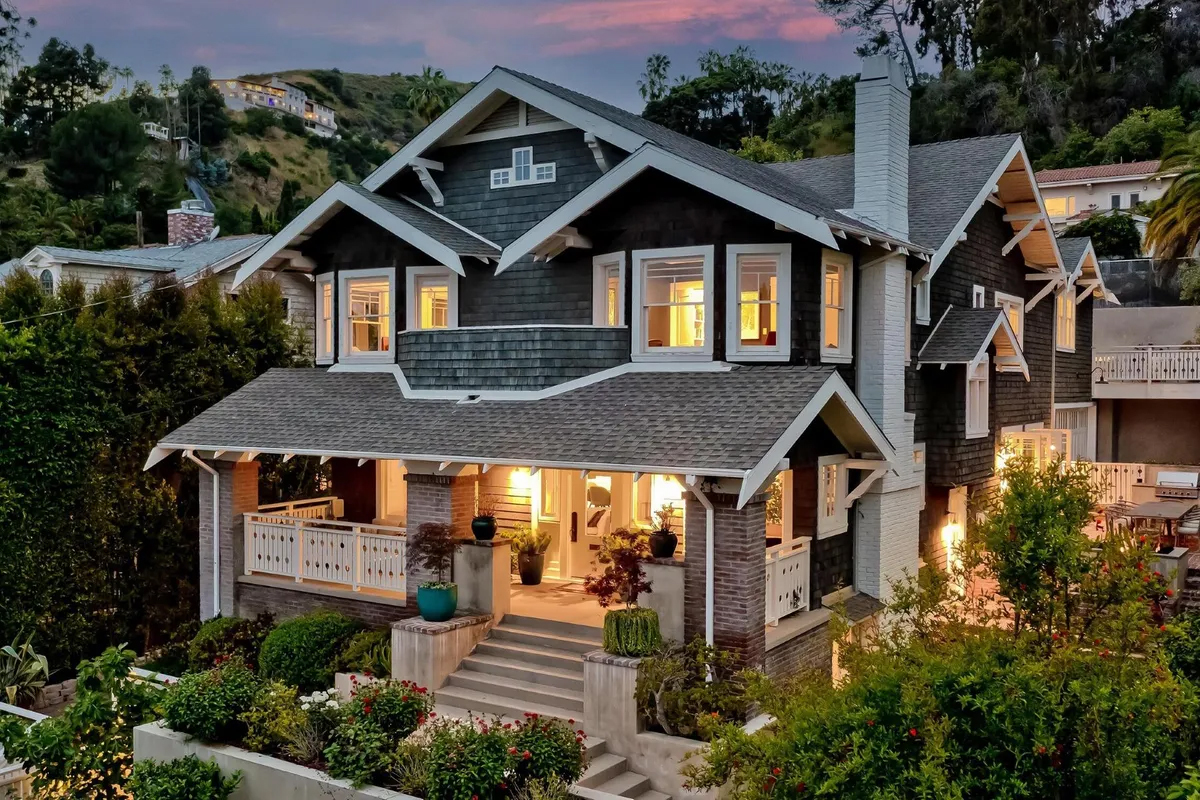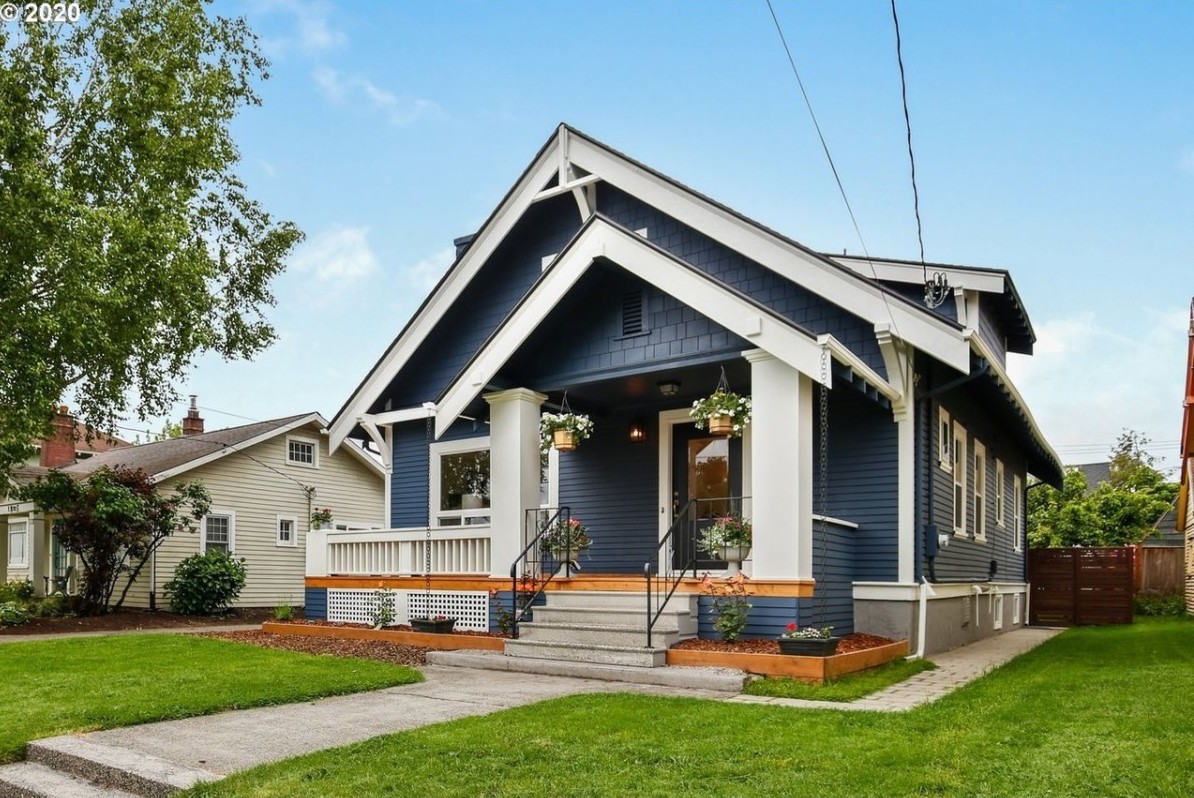The Role of Arts & & Crafts Architects in Elevating Architectural Providers in Residential Design
Arts and Crafts architects greatly influence domestic design via their dedication to craftsmanship and sustainability. They focus on handmade details and natural products, which improve both aesthetic appeals and community identification. By including customers in the style procedure, these architects produce unique living areas that resonate with personal tastes. This strategy questions about the future trajectory of property architecture and its prospective influence on neighborhood dynamics. craftsman style house. What lies ahead for this classic style philosophy?
:strip_icc()/gray-home-exterior-stone-pillars-3e677b71-8e1189a413854b53abf7e0c699feeac4.jpg)
The Principles of Arts and Crafts Architecture
The essence of Arts and Crafts architecture depends on its dedication to workmanship and simpleness. This architectural activity emerged in the late 19th century as a feedback to industrialization, highlighting the value of handcrafted information and all-natural products. The principles of Arts and Crafts architecture focus on performance and harmony with the atmosphere. Frameworks usually feature low-pitched roofing systems, wide eaves, and exposed rafters, promoting a feeling of unity with nature.
Artisans played a substantial function in this style, often incorporating attractive elements like discolored glass, tiles, and woodwork, which show local craftsmanship. The color scheme tends to be natural and subdued, permitting structures to blend perfectly into their environments. Furthermore, the layout motivates open floor plans and common spaces, promoting a feeling of togetherness. On the whole, the principles of Arts and Crafts architecture celebrate the elegance of simplicity and the value of human link to both nature and community.

Sustainable Practices in Residential Layout
While the demand for eco accountable living continues to grow, sustainable techniques in domestic design have acquired considerable grip amongst architects and home owners alike. Architects are significantly including energy-efficient innovations and lasting products right into their layouts, aiming to lower carbon footprints and boost power preservation. Approaches such as passive solar layout, environment-friendly roofing systems, and rain harvesting systems are ending up being common parts of modern-day household architecture.
Additionally, the option of locally sourced materials decreases transportation emissions and sustains local economic situations. Focus on all-natural light and ventilation not only enhances interior air quality yet also minimizes reliance on man-made illumination and environment control systems. These sustainable techniques show a dedication to protecting the environment while giving property owners with comfy, reliable space. As understanding of environmental problems expands, the assimilation of sustainability in property layout is positioned to come to be a specifying characteristic of contemporary architecture, guided by the principles developed by Arts and Crafts architects.
Customization and Personalization in Home Design
Customization and personalization in home style have emerged as essential patterns in reaction to the growing desire for distinct living environments that reflect individual preferences and way of lives. Property owners progressively seek to tailor areas that resonate with their individual identifications, causing a more purposeful connection with their home. craftsman style house. This activity motivates architects to engage customers in the layout procedure, fostering collaboration that assures the last result embodies the property owner's vision
Components such as bespoke designs, customized products, and customized surfaces enable a varied series of expressions in domestic layout. Arts and Crafts architects play an essential function in this evolution, highlighting workmanship and quality. Their concentrate on integrating imaginative elements with capability assurances that each home is not only visually pleasing but additionally distinctly matched to the citizens' requirements. As a result, this emphasis on modification enhances the general property experience, creating areas that are both individual and enduring.

The Effect of Arts and Crafts Architects on Neighborhood Looks
As neighborhoods evolve, the impact of Arts and Crafts architects significantly forms their aesthetic landscape. By emphasizing handmade details, all-natural materials, and standard construction strategies, these architects develop homes that resonate with their environments. Their designs typically include neighborhood flora, structures, and shades, promoting a sense of consistency between developed environments and nature.
The Arts and Crafts activity promotes area identity with building continuity. By motivating homeowners to embrace comparable design principles, communities create a cohesive character that boosts visual charm. This building harmony not only improves the visual experience but additionally imparts a sense of satisfaction among residents.
The focus on sustainability and craftsmanship in Arts and Crafts architecture lines up with contemporary worths, making these layouts pertinent in contemporary settings. Ultimately, Arts and Crafts architects contribute significantly to the general charm and social honesty of areas, leaving an enduring impact on their aesthetic tradition.

Future Fads in Arts and Crafts Architecture
With an enhancing emphasis on sustainability and personalization, future trends in Arts and Crafts architecture are positioned to mix typical workmanship with contemporary advancement - craftsman style house. Architects are likely to prioritize environmentally friendly materials, making use of redeemed timber and all-natural stone to enhance the sustainability of property layouts. The assimilation of smart home technology will end up being widespread, permitting for personalized living experiences without compromising aesthetic stability
The resurgence of artisanal techniques will certainly foster a restored gratitude for handcrafted components, such as bespoke cabinets and personalized ceramic tile job. Future styles might likewise mirror an emphasis on community-oriented rooms, encouraging communication and connection among homeowners. Outside living locations their website will certainly get importance, flawlessly incorporating nature into the home environment. As Arts and Crafts architecture progresses, it will certainly proceed to honor its roots while adapting to contemporary demands, creating harmonious rooms that reflect private worths and lifestyles.
Often Asked Inquiries
What Inspired the Arts and Crafts Motion in Architecture?
The Arts and Crafts motion in architecture was motivated by a response against industrialization, highlighting handmade quality, all-natural materials, and a return to standard workmanship, intending to produce harmonious, practical rooms that commemorated artistry and uniqueness.
Exactly how Do Arts and Crafts Architects Collaborate With Customers?
Arts and crafts architects team up with customers through open dialogue, prioritizing personal requirements and visual appeals. They stress workmanship and sustainability, fostering a partnership that integrates the client's vision with the architect's experience in layout read the article and products.
What Products Are Commonly Used in Arts and Crafts Homes?
Common materials in Arts and Crafts homes consist of all-natural timber, rock, and brick, highlighting workmanship and organic looks. These aspects produce a warm, inviting atmosphere, reflecting the movement's dedication to quality and simpleness in layout.
Exactly how Do Arts and Crafts Designs Enhance Indoor Living Spaces?
Arts and Crafts designs boost interior home by advertising all-natural light, open floor plans, and handcrafted details. These components cultivate a warm, inviting atmosphere, encouraging a link in between residents and their environments via thoughtful, practical visual appeals.
What Are Some Famous Examples of Arts and Crafts Architecture?
Famous instances of Arts and Crafts architecture include the Gamble Residence, Greene and Greene's work of art in California, and the Robie House by Frank browse around this web-site Lloyd Wright. These frameworks showcase handcrafted information and consistency with nature, specifying the activity's essence.